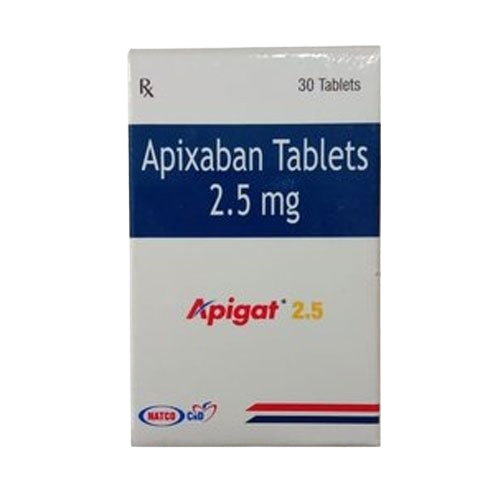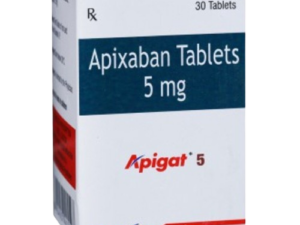Apixaban 2.5 mg Tablets: Complete Guide to Uses, Dosage, and Side Effects
✅ What is Apixaban 2.5 mg?
Apixaban 2.5 mg is an oral anticoagulant medication used to prevent and treat blood clots. It belongs to a class of drugs called direct oral anticoagulants (DOACs) or factor Xa inhibitors. By inhibiting Factor Xa, it reduces the formation of fibrin clots, lowering the risk of deep vein thrombosis (DVT), pulmonary embolism (PE), and stroke in certain patients.
✅ Composition and Drug Class
| Component | Description |
| Active Ingredient | Apixaban 2.5 mg |
| Drug Class | Direct Factor Xa Inhibitor |
| Mechanism of Action | Selectively inhibits Factor Xa, preventing clot formation |
✅ Indications (Uses)
Apixaban 2.5 mg is prescribed for the prevention and treatment of blood clots in various conditions:
- Prevention of stroke and systemic embolism in patients with non-valvular atrial fibrillation
- Prophylaxis of deep vein thrombosis (DVT) and pulmonary embolism (PE) following hip or knee replacement surgery
- Treatment of DVT and PE
- Prevention of recurrent DVT and PE after initial treatment
⚠️ Apixaban is not recommended for use in patients with mechanical heart valves.
✅ How It Works (Mechanism of Action)
Apixaban inhibits Factor Xa, an essential component in the blood clotting cascade. This prevents the conversion of prothrombin to thrombin, ultimately reducing clot formation without directly affecting platelet aggregation.
🔬 Unlike warfarin, it does not require INR monitoring.
✅ Dosage and Administration
| Indication | Typical Dose |
| Stroke prevention in Atrial Fibrillation | 2.5 mg twice daily (in certain high-risk populations) |
| DVT/PE prevention after surgery | 2.5 mg twice daily |
| Secondary prevention after DVT/PE treatment | 2.5 mg twice daily |
| Standard DVT/PE treatment (initial) | Usually 10 mg or 5 mg dose; 2.5 mg used later for maintenance |
💡 Take the tablet orally with or without food.
Dosage may vary based on age, body weight, renal function, and other medications.
✅ Benefits of Apixaban 2.5 mg
- No need for regular INR monitoring
- Rapid onset of action compared to warfarin
- Lower risk of intracranial bleeding
- Can be taken with or without food
- Fixed dosing makes it easy to manage
✅Side Effects
🔹 Common Side Effects:
- Minor bleeding (gums, nose, bruising)
- Nausea
- Anemia
🔹 Serious Side Effects (Seek medical attention):
- Major bleeding (gastrointestinal, intracranial)
- Blood in urine or stool
- Unexplained dizziness or weakness
- Allergic reactions (rash, swelling, breathing difficulty)
⚠️ Avoid activities that increase bleeding risk while on Apixaban.
✅ Warnings & Precautions
- Not recommended in patients with active bleeding
- Use cautiously in:
- Kidney impairment
- Liver disease
- Elderly patients
- May need to be discontinued before surgery
- Not approved for use during pregnancy or breastfeeding
✅ Contraindications
- Active pathological bleeding
- Hypersensitivity to apixaban
- Severe liver disease associated with coagulopathy
- Mechanical heart valves (not studied)
✅Drug Interactions
| Medication | Interaction |
| Antiplatelets (e.g., aspirin, clopidogrel) | Increased bleeding risk |
| NSAIDs (e.g., ibuprofen) | Increased bleeding |
| Strong CYP3A4 & P-gp inhibitors (e.g., ketoconazole, ritonavir) | May increase apixaban levels |
| Strong inducers (e.g., rifampin, phenytoin) | May reduce effectiveness |
✅ Storage Guidelines
- Store below 30°C (86°F)
- Protect from moisture and direct sunlight
- Keep out of reach of children




Reviews
There are no reviews yet.